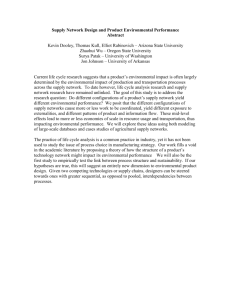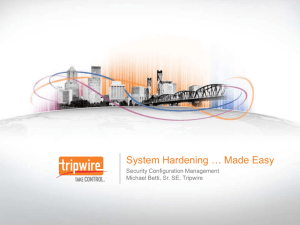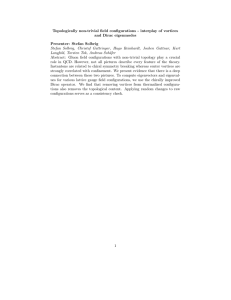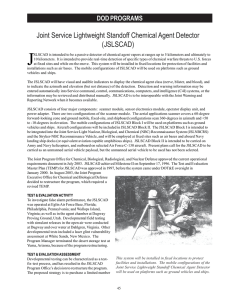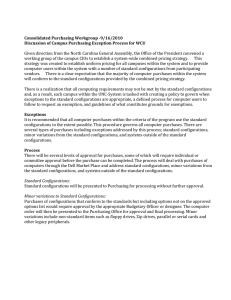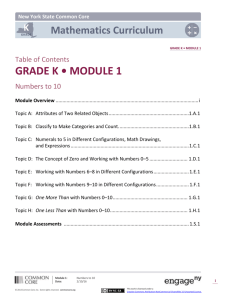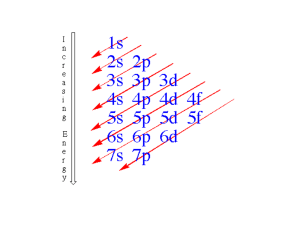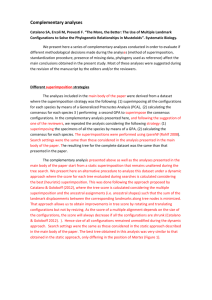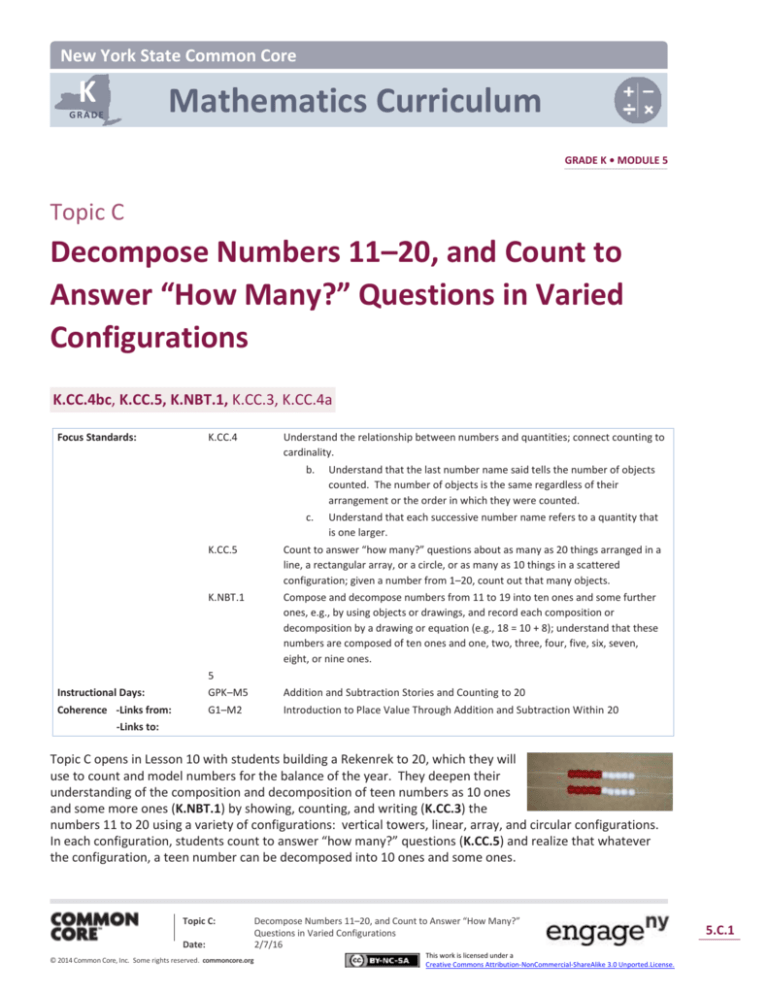
New York State Common Core
K
Mathematics Curriculum
GRADE
GRADE K • MODULE 5
Topic C
Decompose Numbers 11–20, and Count to
Answer “How Many?” Questions in Varied
Configurations
K.CC.4bc, K.CC.5, K.NBT.1, K.CC.3, K.CC.4a
Focus Standards:
K.CC.4
Understand the relationship between numbers and quantities; connect counting to
cardinality.
b.
Understand that the last number name said tells the number of objects
counted. The number of objects is the same regardless of their
arrangement or the order in which they were counted.
c.
Understand that each successive number name refers to a quantity that
is one larger.
K.CC.5
Count to answer “how many?” questions about as many as 20 things arranged in a
line, a rectangular array, or a circle, or as many as 10 things in a scattered
configuration; given a number from 1–20, count out that many objects.
K.NBT.1
Compose and decompose numbers from 11 to 19 into ten ones and some further
ones, e.g., by using objects or drawings, and record each composition or
decomposition by a drawing or equation (e.g., 18 = 10 + 8); understand that these
numbers are composed of ten ones and one, two, three, four, five, six, seven,
eight, or nine ones.
5
Instructional Days:
GPK–M5
Addition and Subtraction Stories and Counting to 20
Coherence -Links from:
G1–M2
Introduction to Place Value Through Addition and Subtraction Within 20
-Links to:
Topic C opens in Lesson 10 with students building a Rekenrek to 20, which they will
use to count and model numbers for the balance of the year. They deepen their
understanding of the composition and decomposition of teen numbers as 10 ones
and some more ones (K.NBT.1) by showing, counting, and writing (K.CC.3) the
numbers 11 to 20 using a variety of configurations: vertical towers, linear, array, and circular configurations.
In each configuration, students count to answer “how many?” questions (K.CC.5) and realize that whatever
the configuration, a teen number can be decomposed into 10 ones and some ones.
Topic C:
Date:
© 2014 Common Core, Inc. Some rights reserved. commoncore.org
Decompose Numbers 11–20, and Count to Answer “How Many?”
Questions in Varied Configurations
2/7/16
This work is licensed under a
Creative Commons Attribution-NonCommercial-ShareAlike 3.0 Unported.License.
5.C.1
Topic C K•5
NYS COMMON CORE MATHEMATICS CURRICULUM
Lessons 11 and 12 represent each teen number as a part of a set of number stairs to 20. Each vertical tower
is set within the ordered continuum. This configuration allows students to see each teen number in
relationship to the others, as one larger than the number before it (K.CC.4c), in relationship to 10, and in
relationship to numbers 1–9 since the lesson’s Problem Set has a color change after 10 ones. Next, in
Lesson 13, students move teen quantities back and forth between linear and array configurations, practice
counting strategies, and recognize that when they answer “how many?” the total has not changed. Finally,
the topic culminates with the most challenging configuration, the circle. Students circle 10 and see that, yes,
the circle is composed of 10 ones and some ones, too. They become proficient at counting in all
configurations to answer “how many?” questions (K.CC.5).
A Teaching Sequence Toward Mastery of Decomposing Numbers 11–20, and Counting to Answer “How
Many?” Questions in Varied Configurations
Objective 1: Build a Rekenrek to 20.
(Lesson 10)
Objective 2: Show, count, and write numbers 11 to 20 in tower configurations increasing by 1—a
pattern of 1 larger.
(Lesson 11)
Objective 3: Represent numbers 20 to 11 in tower configurations decreasing by 1—a pattern of
1 smaller.
(Lesson 12)
Objective 4: Show, count, and write to answer how many questions in linear and array configurations.
(Lesson 13)
Objective 5: Show, count, and write to answer how many questions with up to 20 objects in circular
configurations.
(Lesson 14)
Topic C:
Date:
© 2014 Common Core, Inc. Some rights reserved. commoncore.org
Decompose Numbers 11–20, and Count to Answer “How Many?”
Questions in Varied Configurations
2/7/16
This work is licensed under a
Creative Commons Attribution-NonCommercial-ShareAlike 3.0 Unported.License.
5.C.2

